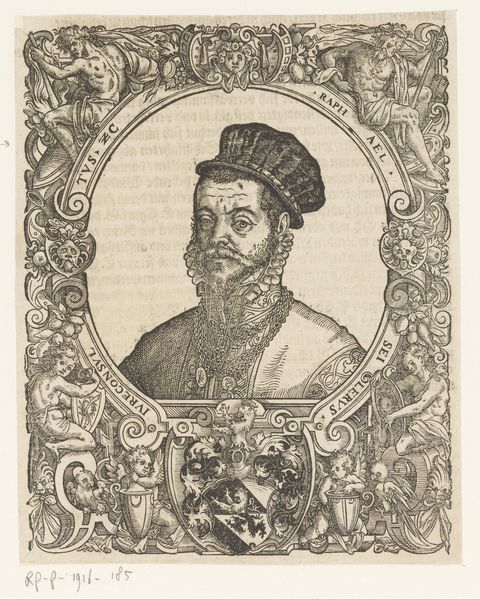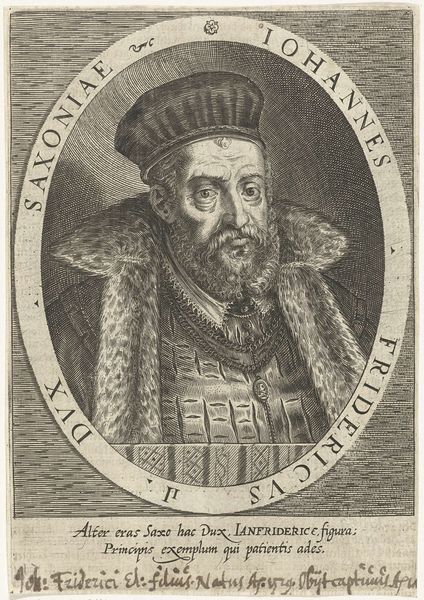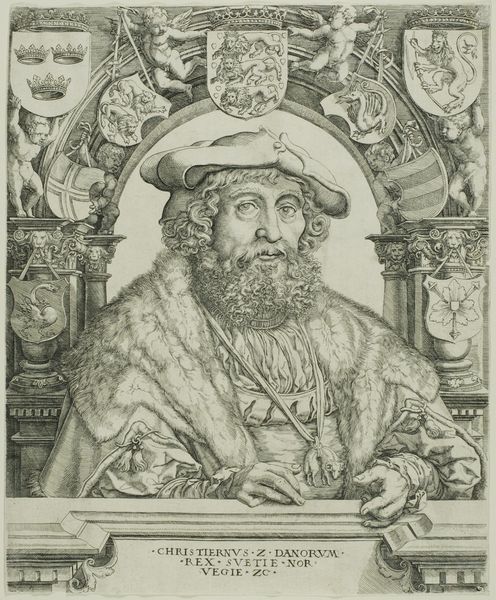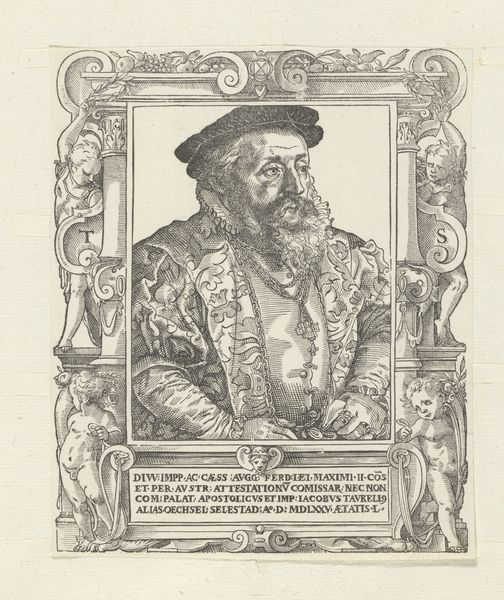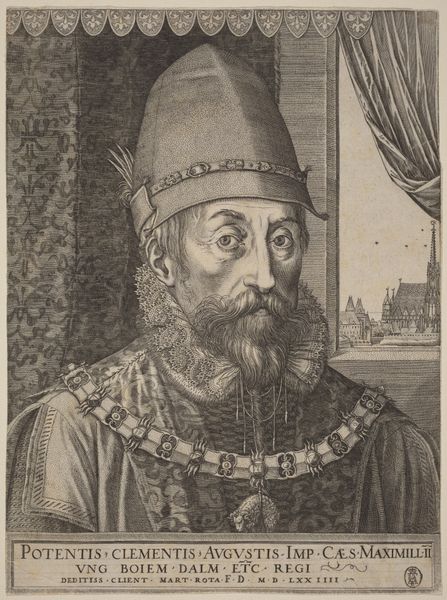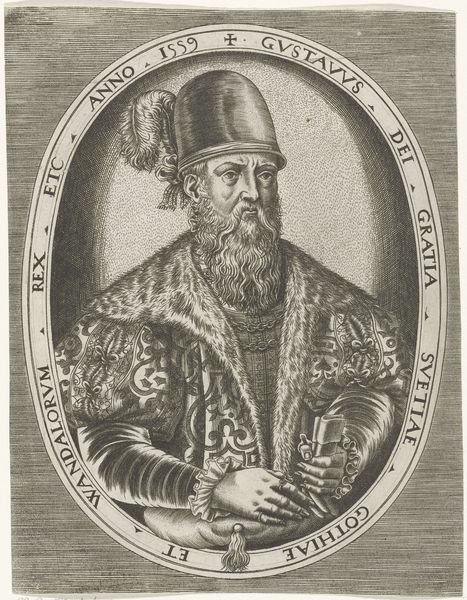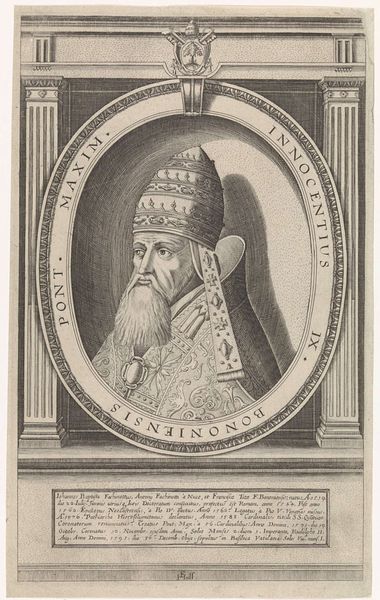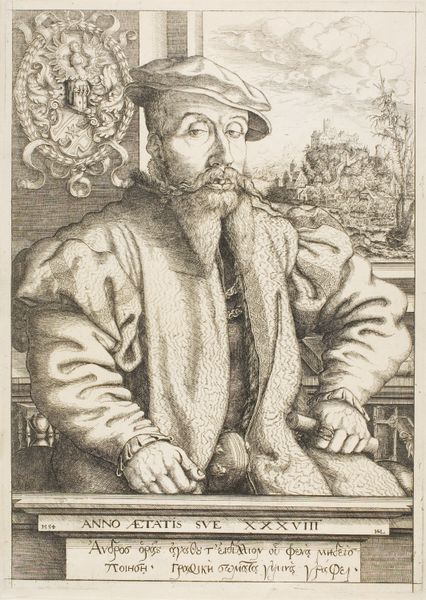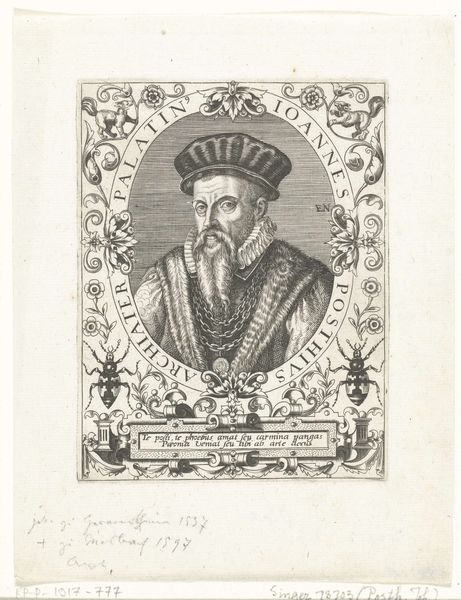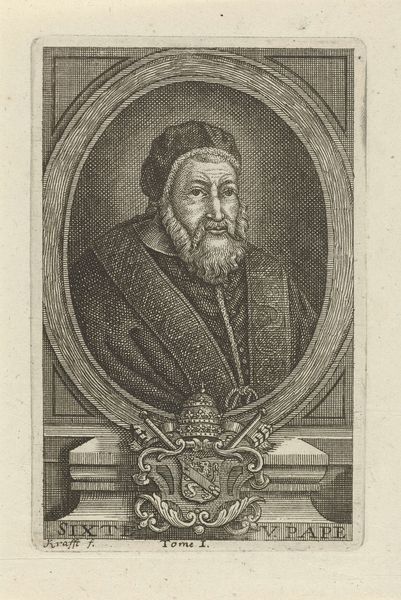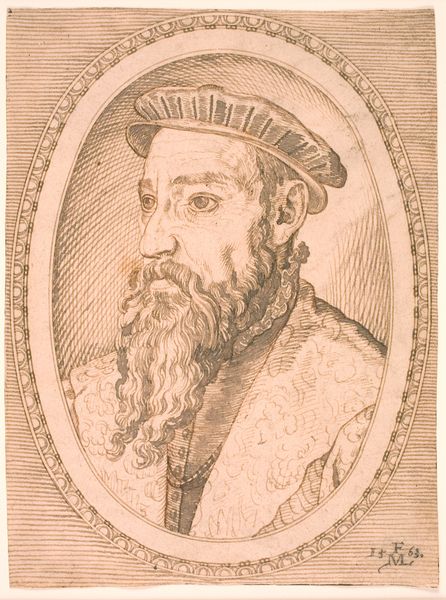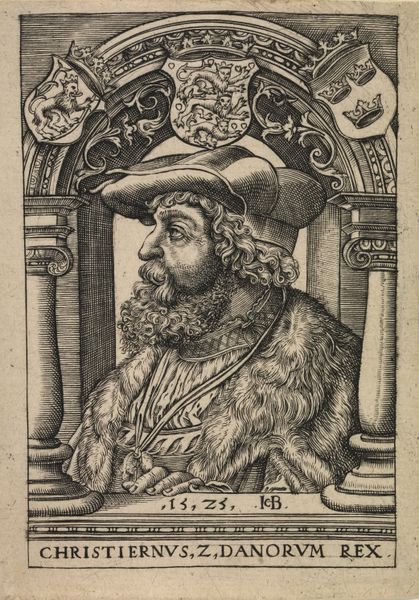
print, engraving
#
portrait
# print
#
11_renaissance
#
line
#
history-painting
#
northern-renaissance
#
engraving
Copyright: National Gallery of Art: CC0 1.0
Curator: The density of line in this print immediately strikes me. It creates an intricate surface pattern. Editor: Indeed. We are looking at Hanns Lautensack’s engraving "Pancraz von Freyberg Hohenschau," created in 1553. The work portrays a stern-faced nobleman, every detail rendered with impressive precision. Curator: Look at how the artist utilizes the density of hatched lines to model form and suggest light. Notice the shading around his eyes, lending him a palpable sense of gravity. There's almost a tactile quality achieved despite the limitations of the engraving medium. Editor: It's worth considering the cultural function of portraiture during the Renaissance. These images served as declarations of status and lineage. Von Freyberg's gaze confronts us, establishing his authority, underscored by his attire and family crest. The chain also reflects his wealth and belonging to an upper class. Curator: The rigid symmetry further emphasizes this sense of controlled power. The composition, framing his face between the heavy hat and the chain, traps the viewer within its field. But there's a strange dissonance – a sort of flatness alongside that detailed realism. Editor: Certainly. One might examine how these engravings facilitated the dissemination of imagery. Consider its political implications: enabling rulers and important figures to project a specific image of themselves across a wide geographical area and among various social strata. It's not just about representation, but the carefully controlled *distribution* of that representation. Curator: From a purely formal perspective, though, the text at the base feels visually disruptive, creating a disjuncture in the composition. It flattens the image, forcing the viewer to confront its artifice, its constructed nature. Editor: I see that; however, its function could be related to immortalization – reinforcing not just his physical appearance but also inscribing his legacy through text, for wider public consumption. Curator: A valid consideration, although the effect on the image’s surface dynamic is unavoidable, I believe. Editor: Absolutely, analyzing how the work actively contributes to and is born from its own period brings forward great understandings about power and dissemination of knowledge.
Comments
No comments
Be the first to comment and join the conversation on the ultimate creative platform.
